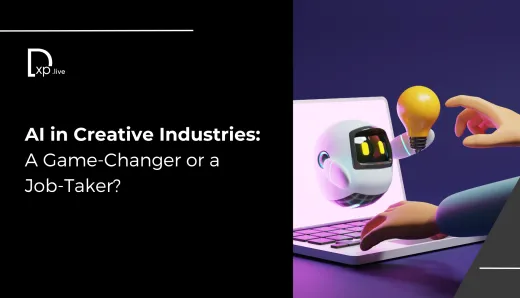How Business Leaders Can Use AI to Outsmart AI: A Strategic Move

AI has undeniably reshaped industries, and we can now say that is an integral part of modern business strategies. But as AI advances, it brings along a host of new challenges—security risks, ethical dilemmas, and complex management issues. So how do we tackle this fast-evolving technology? By fighting AI with AI.
This isn't just a technical issue, is it? It's a business decision that demands attention from C-suite executives. The idea is simple: harness AI itself to manage its risks and complexities. It’s not about fighting against AI but using its strengths to safeguard and enhance your business.
AI-Powered Cybersecurity: Staying a Step Ahead
Cybersecurity is one of the most immediate concerns where AI’s dual nature as both a tool and a threat is clear. Cybercriminals are turning to AI to launch smarter, automated attacks that are tougher to spot.
But can AI counter those threats?
- AI-driven cybersecurity tools can sift through massive amounts of data to identify threats in real-time, often faster than human teams can.
- These systems can detect patterns, predict potential breaches, and automate responses, reducing the time it takes to mitigate an attack.
- By adopting AI-powered security measures, businesses can prevent costly data breaches, maintain their reputation, and protect customer trust.
For business leaders, using AI to defend against AI-driven cyberattacks isn’t just about being proactive—it's about protecting the very core of the business. Data protection is paramount, and AI gives us the tools to safeguard it.
AI Governing AI: Keeping Your Systems in Check
With more businesses relying on AI for decision-making, customer interactions, and operational processes, the importance of AI governance can’t be overstated. AI systems can make errors, act unpredictably, or carry hidden biases that can harm your business.
This is where AI plays a critical role:
- Automated AI oversight tools can continuously monitor AI processes, ensuring that they remain within ethical and regulatory boundaries.
- These systems can spot patterns, foresee possible threats, and automate responses, making it quicker and easier to stop an attack in its tracks.
- AI can also evaluate its own performance, allowing businesses to make necessary adjustments and optimize operations.
Using AI to oversee AI systems ensures compliance, ethical practices, and operational efficiency, all while reducing the need for manual interventions. It's about staying in control of your AI rather than letting it control you.
What Is The Right Balance?
AI is transforming customer engagement, making everything from chatbots to personalized suggestions more effective. But when it’s not handled right, AI can come across as cold and frustrating, leaving customers feeling disconnected.
AI can enhance its own effectiveness, but how?
- AI-driven tools can analyze customer behavior in real-time, constantly improving their interactions to better serve users.
- By learning from past engagements, AI systems can refine their responses to be more human-like and tailored to individual needs.
- AI can also monitor its own performance, alerting businesses when it’s time to step in with human support to ensure a seamless experience.
Let's just say the key is balancing automation with the human touch, ensuring that AI helps, rather than hinders, customer interactions. When done right, AI can enhance customer satisfaction and loyalty, driving long-term value.
Predictive Analytics: Managing the Future with Confidence
Predictive analytics is one of AI’s most compelling capabilities, enabling businesses to forecast demand, anticipate customer needs, and make smarter decisions. Although predictions are only as good as the data feeding into the system.
This is where AI oversight comes into play:
- AI tools can constantly assess and refine predictive models, ensuring they remain accurate and relevant.
- By automating this process, businesses can reduce human error and improve the reliability of their forecasts.
- Accurate predictions give executives the confidence to navigate uncertainty, whether they’re planning product launches or resource allocation.
For tech leaders, using AI to ensure accurate forecasting isn't just about making better decisions—it's about staying ahead of the curve in an increasingly unpredictable world.
Leading AI Responsibly
- AI is here, and it’s opening doors while also bringing new responsibilities.
- The challenge for today’s business leaders is not just to adopt AI but to control and optimize it.
- Fighting AI with AI means using its power to enhance cybersecurity, improve governance, and deliver exceptional customer experiences.
By taking a strategic approach to managing AI, business executives can unlock the full potential of this technology while mitigating its risks. It's the organizations that succeed that will be those that master AI, not just to innovate but to protect, regulate, and optimize their own systems. And that's how businesses thrive in the AI-driven future, staying competitive, ethical, and resilient in the face of rapid technological change.
Join the conversation! Stay ahead with our latest opinions on all the captivating topics!!




